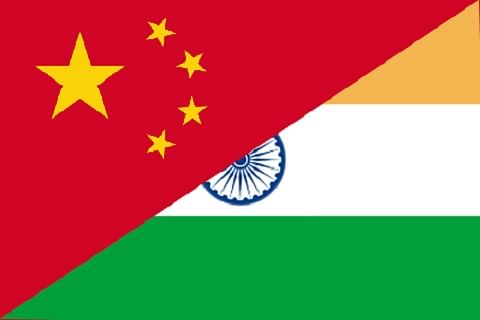In first such moves to bring down tensions in eastern Ladakh, India and China on Tuesday agreed not to send more troops to the frontline, refrain from unilaterally changing the situation on the ground and avoid taking any actions that may further complicate matters.
The announcement of the decisions was made by the Indian and Chinese army in a joint statement, a day after the sixth round of Corps commander-level talks that lasted for 14-hours, in what is seen as an attempt to create an environment to resolve the over four-month long border standoff.
The statement said the two militaries also agreed to strengthen communication on the ground, avoid misunderstandings and misjudgments and earnestly implement the important consensus reached by the leaders of the two countries.
In the statement, it was mentioned that the two sides also agreed to take practical measures to properly solve problems on the ground, and jointly safeguard peace and tranquillity in the border areas.
The two sides also resolved to hold the 7th round of military commander talks as soon as possible.
The announcement of a slew of decisions was made in identical statements released by the Indian and Chinese army in Delhi and Beijing simultaneously.
“The two sides had candid and in-depth exchange of views on stabilising the situation along the Line of Actual Control (LAC) in the India-China border areas,” said the statement released by the Indian Army.
“They agreed to earnestly implement the important consensus reached by the leaders of the two countries, strengthen communication on the ground, avoid misunderstandings and misjudgments, stop sending more troops to the frontline, refrain from unilaterally changing the situation on the ground, and avoid taking any actions that may complicate the situation,” it said about the Corps commander talks.
It is for the first time that the armies of the two countries have announced specific measures to ease tensions in eastern Ladakh after the face-off erupted in the Himalayan region in early May.
Since then, they have rushed thousands of troops and heavy weaponry to almost all the sensitive areas along the LAC.
The situation escalated manifold after 20 Indian soldiers were killed in violent clashes in Galwan Valley on June 15. The Chinese side too suffered casualties, but it is yet to divulge the details.
The situation further deteriorated following at least three attempts by the soldiers of the Chinese People’s Liberation Army(PLA) to “intimidate” Indian troops along the northern and southern bank of Pangong lake area in the last three weeks where even shots were fired in the air for the first time at the LAC in 45 years.
As the tensions escalated further, the foreign ministers of the two countries held talks on the sidelines of a Shanghai Cooperation Organisation meet in Moscow on September 10 where they reached a five-point agreement to defuse the situation in eastern Ladakh.
The agreement was the basis for the Monday talks which was also attended for the first time by a joint secretary of the Ministry of External Affairs(MEA).
The agreement aimed at ending the tense standoff included measures like quick disengagement of troops, avoiding action that could escalate tensions, adherence to all agreements and protocols on border management and steps to restore peace along the LAC.
On the Corps commander talks, government sources earlier in the day said a common assessment that emerged was there should not be any further escalation in tensions as the situation had deteriorated in the Chushul sector following three incidents of shots being fired in the air.
The sources said the Chinese side insisted on withdrawal of Indian troops from the strategic heights around the southern bank of Pangong lake but the Indian delegation clearly conveyed that China’s PLA first vacate the areas from Finger 4 to Finger 8. The mountain spurs in the area are referred to as Fingers.
They said there was a shared view that disengagement of troops was necessary to bring down the tensions and both sides should continue the diplomatic and military talks to finalise the broad contours.
At the talks, the Indian side pressed for an early and complete disengagement of Chinese troops from all the friction points and insisted it was for China to take the first steps to de-escalate the situation, government sources said.
It is learnt that the Indian delegation also insisted on a time-bound implementation of the five-point agreement reached in Moscow.
Monday’s talks began at around 9 am in Moldo on the Chinese side of the LAC across India’s Chushul sector in eastern Ladakh and ended at 11 PM.
The two sides also mentioned the harsh winter in the Ladakh region beginning October when temperatures fall upto minus 25 degree Celsius and oxygen becomes scarce, the sources said.
The Indian delegation was headed by Lt Gen Harinder Singh, the commander of the Leh-based 14 Corps of the Indian Army.
It also comprised MEA Joint Secretary Naveen Srivastava, who has been engaged in diplomatic talks with China on the border row under the framework of the Working Mechanism for Consultation and Coordination (WMCC) on border affairs.
The team also included Lt Gen PGK Menon, who is expected to succeed Singh as the commander of the 14 Corps next month.






